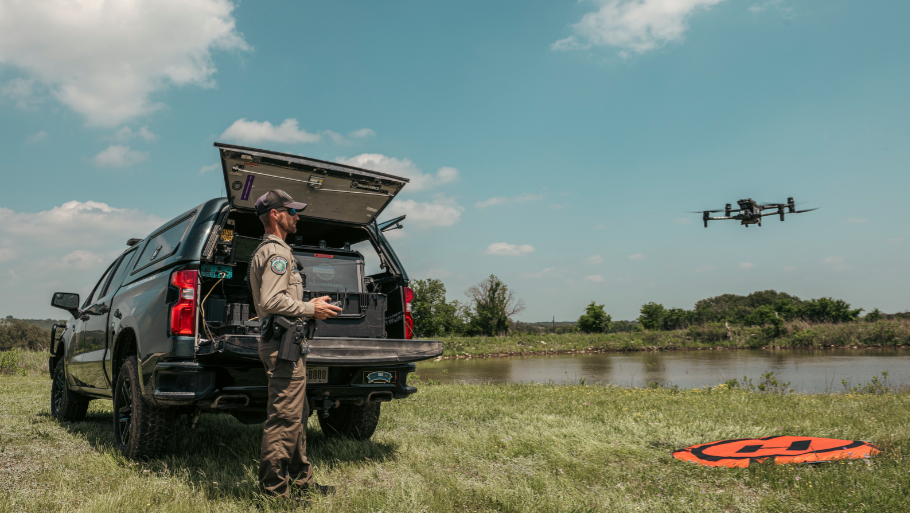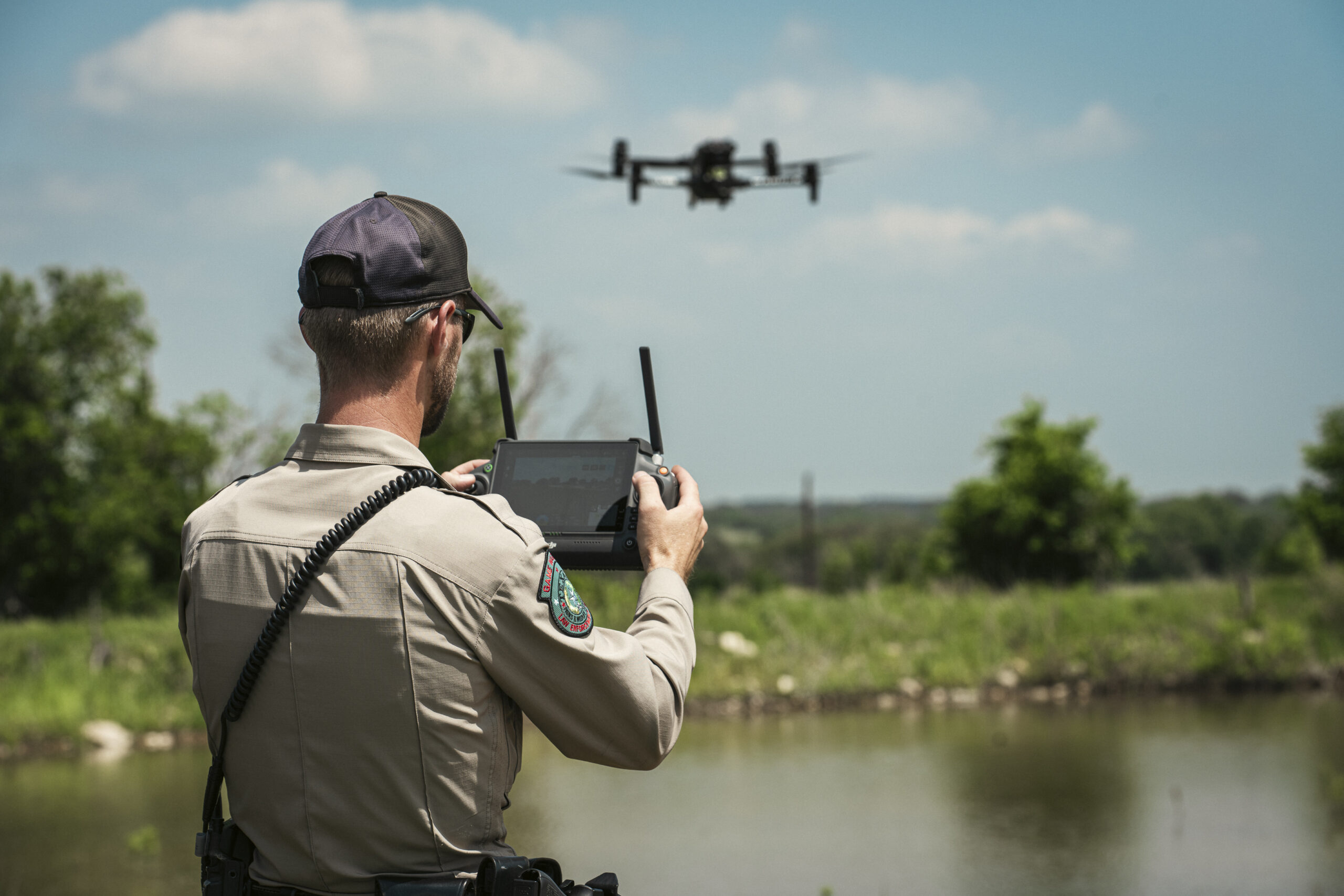When floodwaters raged through Central Texas on July 4, 2025, Texas Game Wardens used Unmanned Aircraft Systems (UAS)—or drones—to save lives and bring critical clarity in the middle of chaos. What seemed extraordinary that day was the result of years of steady investment and training in a program that has transformed how Texas responds to disasters.
The Texas Parks and Wildlife Department’s Law Enforcement Division first tested drones in 2018. At the time, it was a small trial run, with just a handful of game wardens trained to fly aircraft that were still considered experimental in law enforcement. Lt. Matthew Bridgefarmer was there from the beginning.
“The program went live in 2018 as a test, really just a trial balloon,” Lt. Bridgefarmer recalled. “We started with about a dozen pilots and one drone. Within a year, it had grown to every region of the state, including park police. We went from that handful of pilots to around 60 statewide.”
The original focus was search and rescue. The goal was simple: to get eyes in the sky quickly and find people faster. Even in its infancy, the program showed how powerful that could be. Texas Game Wardens have used drones to locate missing people in hard-to-reach areas, scout swift water hazards before boat teams entered dangerous currents, and even deliver life jackets to people caught in the crosshairs of dangers currents.

Nearly 90 percent of the active fleet has been funded through Texas Parks and Wildlife Foundation’s S. Reed Morian Gear Up for Game Wardens program. What began as a handful of donated drones has grown into a sophisticated statewide capability that has changed how Texas Game Wardens do their work.
“Today we have a fleet of roughly 75 active drones and 50 trained pilots,” Lt. Bridgefarmer said. “They range from small drones that can fly inside a collapsed structure to large models that can carry payloads. That growth and the quality of our equipment would not have happened without Gear Up for Game Wardens. We wouldn’t be where we are as a program without it.”
Philanthropy has been central from the very beginning. “When we first started Gear Up, we knew it could make a difference, but I don’t think any of us imagined just how far it would go,” said Randy Fowler, an early supporter of the program and current TPWF trustee. “Seeing these drones save lives, seeing the gear in action when it matters most—that’s why we do this.”
“For the dollar, drones are probably one of the most impactful pieces of equipment in the Gear Up for Game Wardens program,” Fowler added. “It’s incredibly rewarding to know our support is helping game wardens do their job safer, faster, and better.”
The drone Fowler helped fund was quickly put to use, and his support inspired others to follow. In the years since, Gear Up donors have funded dozens more, along with batteries, cameras, handheld thermal imagers, and mobile command kits that allow drones to stream live video directly to incident command. That capacity has given Texas Game Wardens new tools to protect Texans during floods, fires, hurricanes, and myriad situations that pose a danger.

The July 4 floods were a striking example of how far the program has come. Drones were flown across multiple river systems to guide boat teams, scout debris fields, and provide real-time situational awareness to command posts. At times, more than 20 live video feeds were streaming into the state’s operations center. One drone dropped a life jacket to a woman clinging to her rooftop, the first aerial delivery of its kind in Texas. At Camp Mystic, a drone was used to help guide helicopters and coordinate the evacuation of hundreds of campers and staff.
Lt. Bridgefarmer said the program’s success is not just about technology, but about training and teamwork. “We focus on mastering the basics so we can integrate with other units—swift water rescue teams, K-9 units, aviation, even SWAT,” he explained. “We train alongside them so that when an event happens, the communication is seamless and the integration is natural. That’s why it worked as well as it did on July 4.”
The equipment itself continues to evolve. Lt. Bridgefarmer has his eye on vertical takeoff fixed-wing drones that could stay in the air longer, cover more ground, and map wide areas more quickly. Heavy-lift models that can carry larger payloads, like cases of water or medical supplies, are also on the horizon. Those advances could make a profound difference in both search and rescue and disaster relief.
Since 2017, Gear Up for Game Wardens has provided more than $7 million in gear, and the drone program stands as one of its most visible successes. What began as a single donated aircraft has become a statewide system that is saving lives and shaping the future of law enforcement response in Texas.
For Lt. Bridgefarmer, the program is as personal as it is professional. “You don’t realize the extent that this equipment saves lives until you see it in action,” he said. “Without Gear Up, we simply would not have been able to do the work we’ve done.”
The sight of a drone hovering over a flood, fire, or search scene has become a familiar one in Texas. Those eyes in the sky represent more than technology. They represent a partnership between dedicated game wardens and generous Texans who believe in equipping them to serve. And as future disasters unfold, this galvanizing partnership will continue to shape how Texas responds.


